 1xbet App
1xbet App
 Bet365 App
Bet365 App
 Betfair App
Betfair App
 12bet App
12bet App
 Betway App
Betway App
 22bet App
22bet App
 Mbet App
Mbet App
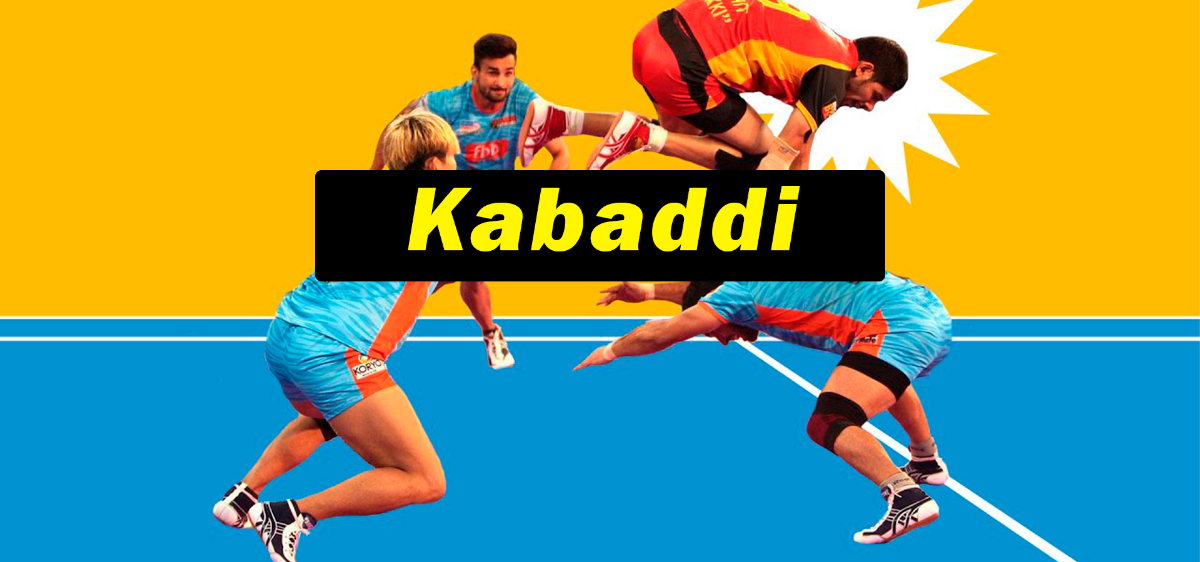
Have you ever tried this household game, Kabaddi, whose popularity spans from friendly childhood activity to professional levels? Anyone residing in or from India and other South Asian nations must know this sport. It is as popular as the other games, but Kabadi experience and skill merge the aspects of several sports together, precisely wrestling and football.
It’s a regional sport that basically involves participants touching each other. If you have ever watched the 2018 “Tag” American film, acted by the likes of Jeremy Renner, this should not be a difficult concept to internalize.
To illustrate this sport, we need you to have the imagination of two teams or groups, each attacking and defending in alternation. Earned points are counted based on the number of successful raids or defensive actions. Of course, this counting is based on some ground terms, which are illustrated within this discussion.
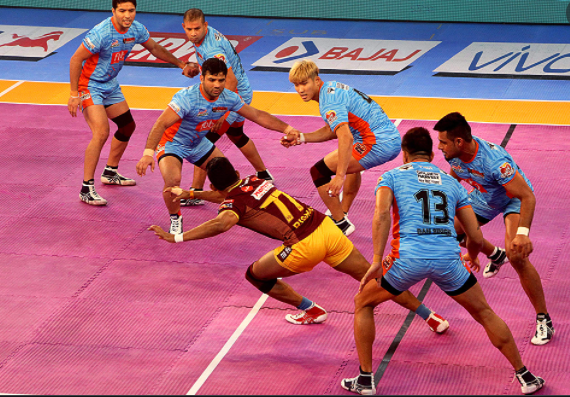
In summary, Kabaddi players consist of two separate teams. Each side sends attackers to the other sides’ side for raids and retrains opposition side from making successful raids or gaining points from violation of Kabaddi rules by the defenders.
Despite it seeming simple, its professional approach and tactics may be pretty challenging. The pitch setup and rules make the Kabaddi game very entertaining. Other countries and regions have actually come to love this sport. We expect it to be a worldwide event with time as the fan-based expands.
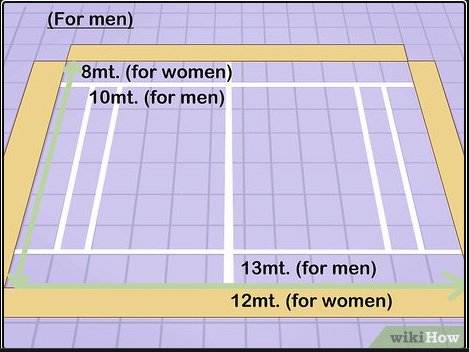
To summarize the entire concept, let’s start with the Kabaddi court.
We have discussed more Kabaddi court size in the respective section.
Here is the incisive breakdown of Kabaddi playing:
We need to dig deeper into this sport’s origin and establish its evolvement over the years. It is currently an international event with the Indian Kabaddi team garnering the highest points, enough to be crowned the world champions. Other countries in the list of top-ranked teams are South Korea, Iraq, Bangladesh, Thailand, Japan, Canada, etc. However, the retrace of Kabaddi history shows this game’s existence around 3000+ years ago, or assertively the pre-historic time. Some chronicle researchers and scholars believe that this sport anciently involved princes intending to win their bride’s heart.
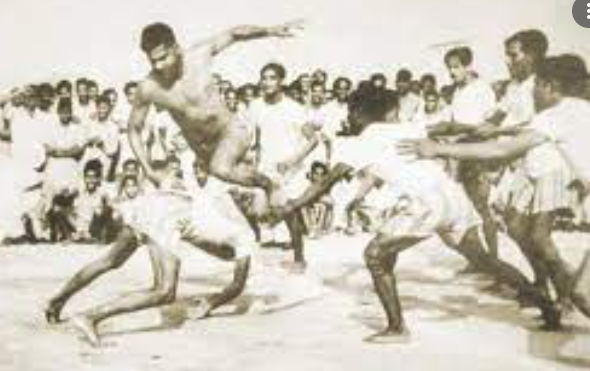
However, most of the Kabaddi information is not clear until the early 1930s, when the first professional event took place. We are recognized, or at least our forefathers are credited for their prominent role in promoting this sport from being a mere village game to its current international standards. That resulted from the foundation of the Indian Olympic Games program and the All-Indian Kabaddi Federation. All of this happened in 1938 and 1950, respectively, before other Asian countries espoused the Kabaddi game in their programs.
One of the primitive requirements is for every raider to acquiesce to the Kabaddi Cant. This canon says that the attacker must use the chant as long as they are still in the defense’s side. This brings in the casual nature of play, allowing participants to enjoy themselves more. It is still a lot like the traditional kids’ game but with its concept enacted at the expert level. Many rules are governing the on and off-court conduct of participants. However, the regulations have shaped Kabaddi games by giving them a professional look and making them acceptable for adult sports. Some of the basics in today’s Kabaddi rules and regulations are:
There are many general and match Kabaddi rules which you will need to know.
Unlike in professional sporting, Kabaddi wagering is less demanding. You won’t need to do in-depth research or learn about their endless rules – it can be a nuisance at times. Be that as it may, one still needs to garner some information and data about the Kabaddi game for their prediction accuracy to improve.

Many bookmakers, like 1xbet, provide real money and free online Kabaddi games to play. Use the standard method by:
This romp of strength and tactical coalescence is played on properly measured platforms that suit its nature. For instance, considering the fast rate of energy-draining, complete matches clock users play Kabaddi game for 40 minutes. The pitch characteristics and physical requirements vary based on gender and age. Some of the key specifications include:
The regulation of this sport, like many others, is overseen by different administration units at local, national and international levels. The very first Kabaddi league was held in 1951 under the arrangements made by All-India Federation (AIKF), the governing unit formed a year earlier. AIKF has since been taking a central spot in all national competitions involving senior players. Following the nationalized status of the sport and its rapidly growing international recognition, we needed to nurture young talents who can protect our championship in future. Therefore, the Amateur Kabaddi Federation of India (AKFI) was founded in 1973 to oversee activities at the junior levels. These compete with other younger teams from within the country and abroad. At the global level, International Kabaddi Federation (IKF) controls and regulates the sport’s programs.
This sport has been amalgamated in various regional, national, and world competitions. The main event is the world cup which the India national Kabaddi team has won six times out of 7, only losing once to Pakistan in 2000. It has always been the most exciting of all tournaments, with the men’s and women’s events primarily involving Asian countries.

Other popular and major Kabbadi leagues include:
All the competitions involved the two forms of Kabaddi game – circle and standard styles.
Despite there being many Kabbadi players, some have managed to perform better than the rest in terms of experience, tactility, achievements and followers. Even though many of them have shown a lot of expertise in the game, the reigning king of Kabaddi is Pardeep Narwal – an accomplished guy born in Rindhana, India.
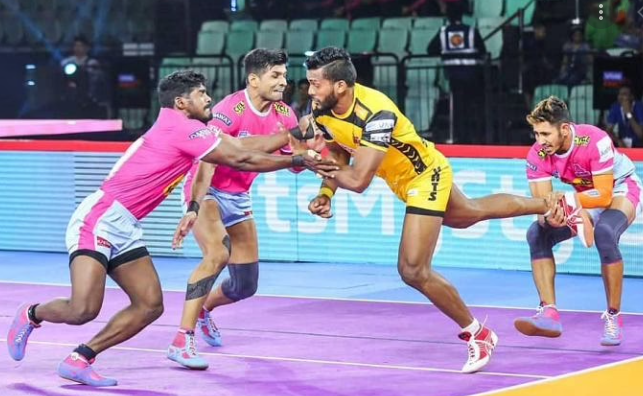
We also have many other famous figures – some have been featured in the Kabaddi world cup Indian team and served the country proudly. These world-class personalities include; Anup Kumar, Deepak Nlwas Hooda, Rahul Chaudhari, Manjeet, Surender Nada, Sandeep Narwal and Anjay Thakur.
We all know that the primary goal of participating in any competition is to meet the winning criteria with higher scores or approvals. This is the same intent behind every effort made by participants in this game. Therefore, the objective of Kabaddi is to beat the other team by making the most touches and escaping before you are tackled. Each of these contacts yields a point for the attacker’s team, while two points would be more remarkable if you send out all the opposing Kabaddi team players.
As mentioned earlier, twelve maxima are allowed in each team. One member of the offence side comes forth at each turn and attempts to tag as many Kabaddi players as possible from the defending side. The touched member/s should leave the pitch, rewarding the raider’s team a point. Each team can only participate if they have at least 10 members present. Seven of the available members are involved in the live action while the additional ones wait to play Kabaddi as substitutes.
As the tale goes, this game was initially played for fun, pride and, at times, to show one’s strength. Unlike the modernized Kabaddi game, it is believed that most of the current rules didn’t apply in the past. This means it could turn dangerous, especially when the participants were fighting for recognition. That’s simply because tackling and other activities like one’s strength didn’t count. Additionally, there were no Kabaddi teams; instead, villagers would gather and select those amongst them with superior strength. However, as human culture and way of life evolved and many of the tactics changed owing to new established restrictions. We currently have a better version, which applies all possible precautionary measures to ensure every Kabaddi player is safe throughout and after the match.
Before we make it all about Kabaddi in Hindi, how about considering countries that participate in this competition? Yes, it has become one of the popular sports in India, but didn’t we have the same in other parts of Asia? Haven’t we witnessed different continents grow to love and develop outstanding players in Kabaddi?

Let’s see some of the countries with national teams:
The above countries, among others, are registered members of the international body in charge. We still have nonmembers with national Kabaddi teams like China, Vietnam, Kenya, Mexico, Denmark and Argentina.
So, what do you need to become a good Kabaddi player? First, one must be disciplined and mentally present. This will aid in fast thinking and the ability to overpower your other sides by promptly catching sight of their plan/s. The other key aspect is “body strength”. Your whole body must be strong enough, fit for easy and quick runs, and characterized with solid thighs. Playing Kabaddi will often require you to sprint, sometimes jump, and at times put your adversaries off using solid muscles. Other requirements include:
This should be easy for anyone residing here, considering that, Kabaddi is the national game of Bangladesh, our close neighbors. Again, even with cricket being official India’s event, Kabaddi’s popularity in this Asian subcontinent is enormous. We have even assumed the central role of promoting this sport, making our country more like a brand ambassador.
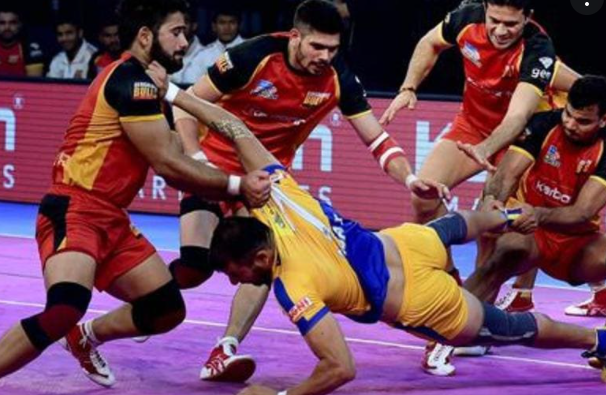
Here is a quick overview on taking part in this sport from home, school or at the professional level:
Now repeat the cycle between attacks and raids in an alternating manner until the end of both periods. After that, count the cumulative points scored by each side to get a winner.
These are usually creatively and cleverly designed, primarily practiced in the Kabaddi coaching center. With one raider against several defenders, top-notch strategies prove necessary. Getting the point is not as easy as it would seem in theory because the chances of escaping even three experienced players remain incredibly narrow. However, with several good raiders onboard your Kabaddi the game methods, your side can seamlessly get excellent scores.
Some basic features of this game must be observed by every player. These include:
As one of the critical rules, you must yell the words “Kabaddi Kabaddi” throughout the time you are on the other side of the field.
The raider is free to enter from any side – left, right or center is okay provided they get a good position allowing them to touch and escape tackles.
The movement of your foot as the raider should be unpredictable as your pose will influence the speed, flexibility, and other factors contributing to a well-taken raid.
indiansbets.in © 2021-2025

Comments